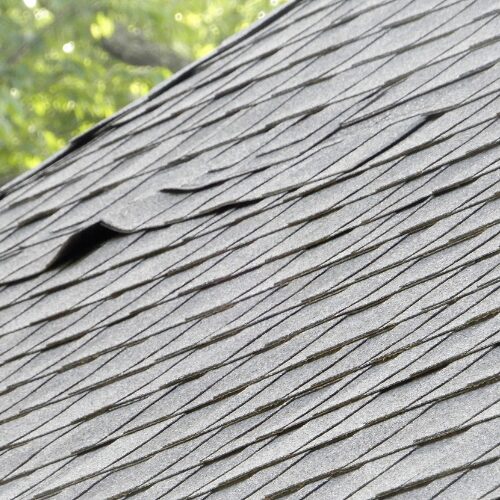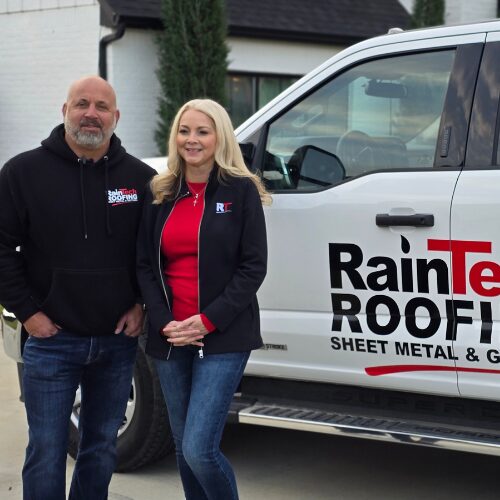What Roof Storm Damage Should I Look For After Severe Weather?
Tulsa’s frequent and severe storms can leave roofs vulnerable to hidden damage, making it essential for homeowners to identify early signs of roof damage. Acting promptly can help prevent costly repairs and more severe structural issues like leaks, mold, and weakened roofing integrity. With extensive experience in the roofing industry, RainTech Roofing understands the specific challenges Tulsa roofs face and offers insights into what to look for post-storm to keep your roof and home in top condition.
When it comes to Tulsa’s unpredictable weather, roofs endure a lot. High winds, hail, heavy rain, and debris from thunderstorms all pose significant threats to roofing materials and structural integrity. Understanding how these factors can damage your roof is essential to spot early signs of roof damage. Drawing from years of experience with Tulsa’s climate and its impact on homes, RainTech Roofing offers insights into the most common ways storms can harm your roof—and what you should be watching for in the aftermath.
- High Winds: Strong gusts can lift or even tear off shingles, exposing the underlayment and making your roof more vulnerable to water intrusion.
- Hail Damage: Hail often causes dents or cracks in shingles, reducing their effectiveness against moisture and weakening their durability over time.
- Heavy Rain and Flooding: With heavy rainfall, any pre-existing vulnerabilities in your roof’s structure are more likely to worsen, increasing the risk of interior leaks.
- Debris Impact: Storm debris, such as fallen branches, can puncture roofing materials or cause cracks that lead to further structural issues.
Post-Storm Roof Damage: The Early Signs
Spotting early signs of roof damage promptly after a storm is crucial in protecting your home’s overall health and safety. As experts in roofing and storm damage assessment, RainTech Roofing recommends looking for these common indicators to prevent minor issues from becoming extensive repairs.
- Visible Shingle Damage: One of the most immediate signs of storm-related roof damage is missing, cracked, or curled shingles. Damaged shingles compromise the roof’s water resistance, leaving the underlying layers vulnerable to moisture infiltration.
- Granule Loss: Granules help protect shingles from UV damage and harsh weather. If you notice granules in your gutters, this may indicate that your shingles have sustained damage or are reaching the end of their life, making it essential to check for more early signs of roof damage.
- Loose or Damaged Flashing: Flashing protects roof edges, chimneys, and vents by sealing them against water. When flashing becomes loose or damaged, the roof is more susceptible to leaks and deterioration.

- Water Stains Inside the Home: Signs of roof damage aren’t always on the roof itself; they’re often visible indoors. Water stains on ceilings, peeling paint, and damp spots indicate a roof leak that could worsen without prompt attention.
- Sagging or Uneven Roof Sections: A roofline that sags or has uneven sections may indicate structural issues due to moisture damage or prolonged wear.
- Clogged or Damaged Gutters: If gutters are filled with granules or roofing debris, it’s often a sign of roof wear that requires further inspection.
Exterior Inspection Tips
Conducting an exterior inspection helps identify visible signs of storm-related roof damage while ensuring your safety. At RainTech Roofing, we advise homeowners on simple but effective ways to inspect their roofs from the ground. This is especially important for spotting early signs of roof damage without climbing onto the roof, which can be hazardous if you’re unfamiliar with roofing safety protocols. Begin by walking around your home’s perimeter. Observe the roof for any missing shingles, loose flashing, or debris buildup, especially in roof valleys where moisture tends to accumulate. Using binoculars, you can get a closer look at any sagging or buckling along the roofline, which may indicate compromised structural integrity. Checking the soffits and fascia for rot or cracks also provides early insight into potential storm damage that might not be immediately visible on the roof itself.
Interior Inspection Tips
A thorough interior inspection can help detect less obvious signs of roof damage, especially when storm-related leaks are concerned. As seasoned roofing professionals, RainTech Roofing recommends inspecting areas inside your home, particularly the attic, for early signs of roof damage that could escalate if overlooked. Start with the attic, where damp insulation, darkened wood, or visible daylight through the roof can indicate missing shingles or gaps. Water damage may also show up in your living spaces such as stains on ceilings or walls, peeling paint, or unexplained damp spots. By catching these early signs of roof damage indoors, homeowners can take timely action to prevent costly repairs and safeguard their home’s structural integrity.
When To Call a Local Roofing Company
While some roof issues are visible, others require the trained eye of a professional. RainTech Roofing’s experience in storm damage repair and inspection ensures homeowners can protect their investment and address hidden damage effectively. We recommend contacting a professional roofing company if you notice any of the following signs:
- Visible Damage: Missing shingles, granule loss, or damaged flashing are indicators that a professional should assess.
- Interior Water Stains: If you see water stains or damp spots indoors, a professional assessment can identify the source and scope of the damage.
- Unclear Signs of Damage: If you’re uncertain about the condition of your roof after a storm, a professional inspection can help identify any underlying issues.
With RainTech Roofing, you have the peace of mind that your roof is in expert hands. Our team not only performs thorough inspections but also works directly with insurance providers to ensure customers receive the maximum coverage possible.

Stay Proactive: Tips To Minimize Storm Damage
Prevention is key to protecting your roof from the cumulative effects of Tulsa’s storms. RainTech Roofing’s experts advise homeowners to implement these preventive measures to strengthen their roofs and reduce the likelihood of damage:
- Routine Maintenance: Clean gutters regularly, trim overhanging branches, and conduct seasonal roof inspections to prevent buildup and damage. RainTech Roofing offers comprehensive gutter services.
- Roof Reinforcements: For added durability, consider installing impact-resistant shingles or gutter guards, which provide enhanced protection during severe weather.
- Professional Inspections: Regular inspections from a trusted roofer like RainTech Roofing help catch minor issues before they become costly repairs, ensuring your roof is storm-ready year-round.
By investing in preventive measures, homeowners can extend their roof’s lifespan, increase its resilience, and save on repairs in the long run.
RainTech Roofing Can Help Protect Your Home!
Spotting the early signs of roof damage after a storm is one of the most important steps Tulsa homeowners can take to protect their property and avoid major repair costs down the road. Hail, wind, and heavy rain can silently compromise your roofing system—leading to leaks, structural issues, and even mold if left unchecked. That’s why a proactive approach, including regular inspections, routine maintenance, and prompt repairs, is essential for extending the life of your roof and safeguarding your home.
If your property has recently experienced a storm or you’re unsure of your roof’s current condition, now is the perfect time to schedule a professional inspection. RainTech Roofing offers FREE, no-obligation post-storm inspections designed to catch small problems before they turn into big expenses. Our experienced team will thoroughly assess your roof, identify any potential issues, and provide honest recommendations on next steps.
Give us a call today at (918) 449-1474 or visit our website to book your inspection. Peace of mind is just one appointment away—let RainTech make sure your roof is ready for whatever Oklahoma weather brings next.
